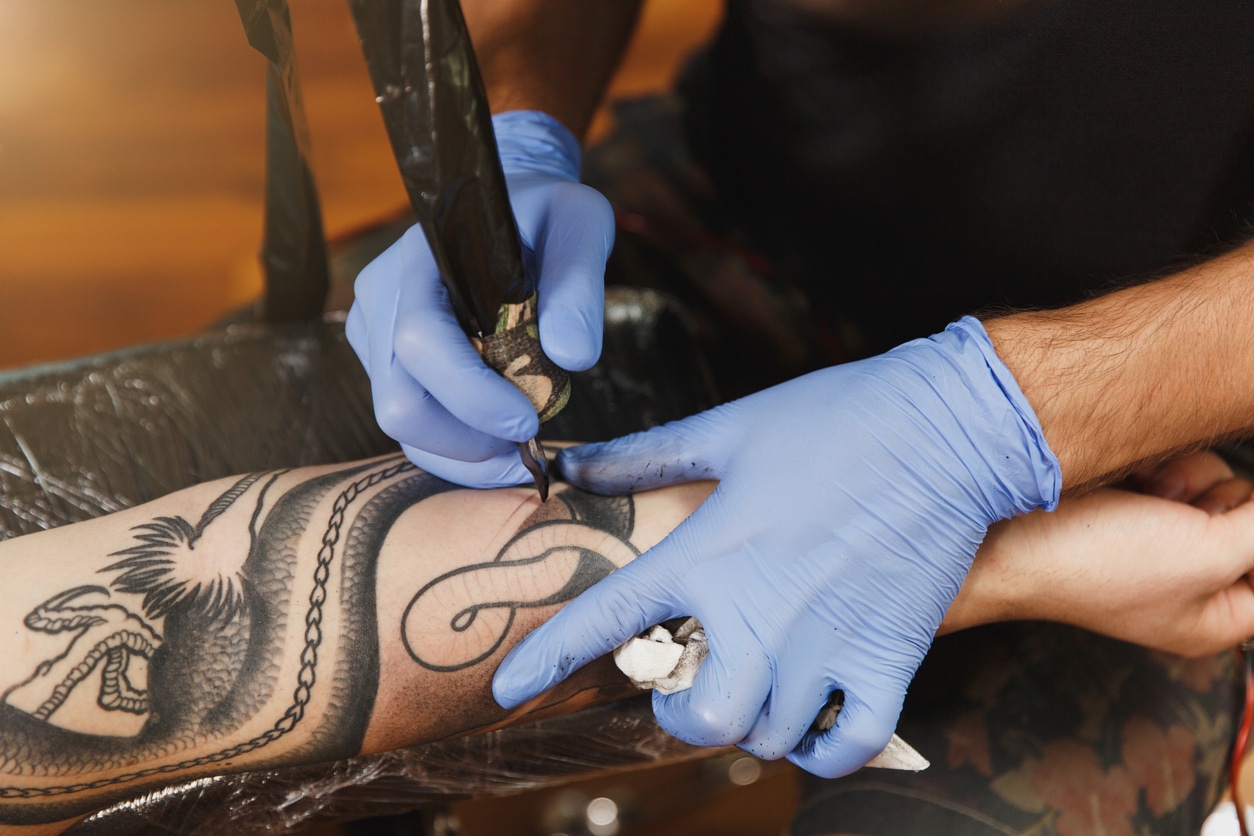What You Need to Know About Tattoo Infections
Michele Mirman | Personal Injury | April 6, 2020

Tattoos are a form of permanent art and body modification. To get a tattoo, an artist inserts ink into the dermis layer of skin using a needle. Tattoos can be of any image and can include multiple colors. Recently, permanent make-up has also become more popular. This is where a tattoo artist uses ink and a needle to create permanent make-up looks like eye-liner, lip liner, or eyebrow filling.
Tattoos are common. In 2015, a survey found that about 3 out of 10 Americans had at least one tattoo. While tattoo artists are regulated by states, it is not a perfect system. Things can and do go wrong. If you are thinking about getting a tattoo, you need to make sure you do your due diligence on the tattoo artist you want to use and the risks of getting a tattoo.
Types of Tattoo Infections
Infections from getting a tattoo are more common than you think. They can be minor infections that go away on their own or they can become major health issues that need medical intervention. Some common types of tattoo infections include:
· An allergic reaction to the tattoo dye
· Inflamed tissue or skin around the tattoo site
· Skin infections including tuberculosis or staph
· Overgrowth of scar tissue
· Burning or swelling at the tattoo site
· Blood-diseases like HIV, hepatitis B, hepatitis C, and tetanus
Tattoo dye and pigments are regulated by the U.S. Food and Drug Administration (FDA). However, there have not been any long-term studies done to show what side-effects injecting ink into the skin might create. Currently, over 50 pigments are approved for use in cosmetics and ink but only for use on the surface of the skin. There are no pigments that have been declared safe for injecting underneath the dermis of the skin.
There are risk factors that make it more likely that you may get an infection. These include:
- Not following aftercare instructions,
- Getting a tattoo from an unlicensed artist,
- Getting a DIY tattoo,
- Wearing clothes that may irritate the tattoo area,
- Not using sterilized equipment during the tattoo session, or
- Swimming in water before the tattoo has healed.
If the tattoo artist or tattoo parlor were negligent and resulted in you getting an infection, you might be able to sue them for malpractice. In order to do this, you must be able to prove that the artist was negligent and that this negligence caused your injury.
Symptoms and Diagnosis of a Tattoo Infection
One of the most common and dangerous risks of getting a tattoo is a skin infection. Symptoms of a skin infection include a rash over the tattoo site, fever, swelling, drainage, pain, shaking, sweats, or chills. These infections can be caused by unsterile conditions or reusing needles. In some cases, they may also be caused by contaminated ink.
Usually, skin infections are caused by bacteria like staphylococcus or viruses like herpes, hepatitis, or HIV. Bacterial infections can usually be treated with antibiotics. Some may be antibiotic-resistant and could lead to a very serious condition called sepsis. This can be life-threatening if not caught fast enough. Viral infections may go away on their own but some may become permanent disabilities.
You need to see a doctor if you develop any type of fever or if you get sweats and chills after getting a tattoo. Time is of the essence if you do have a skin infection. The doctor will listen to your complaints and check out the tattoo site. They will be able to diagnose skin infections, allergic reactions, or inflamed skin. You should also notify the Health Department or tattoo artist to make sure that no further infections happen in other customers.
Minimizing the Chances of Getting a Tattoo Infection
If the building looks dirty, it could be a good indication that they do not sanitize the area well. The best place to check to see how they clean – the bathroom. If this room is disgusting, you need to find a different tattoo artist. There are things you can look at to help minimize your chances of getting a tattoo infection. These include:
- Only getting a tattoo from a reputable and licensed tattoo facility.
- Make sure the tattoo artist complies with state laws. Each state has different regulations and requirements. Know the laws before you get your tattoo.
- Make sure the artist does not reuse a razor to shave the hair away from the tattoo site.
- Make sure the artist does not reuse needles. Watch them to ensure they remove a new needle from a sealed package.
- Ask your artist to wash their hands and wear gloves while giving you the tattoo.
- The tattoo artist should swab your skin with disinfectant before they begin.
- When the tattoo is complete, it should be covered with a sterile bandage. Reputable artists will give you a handout that outlines care for your tattoo. Follow all guidelines to lower your chances of developing an infection.
